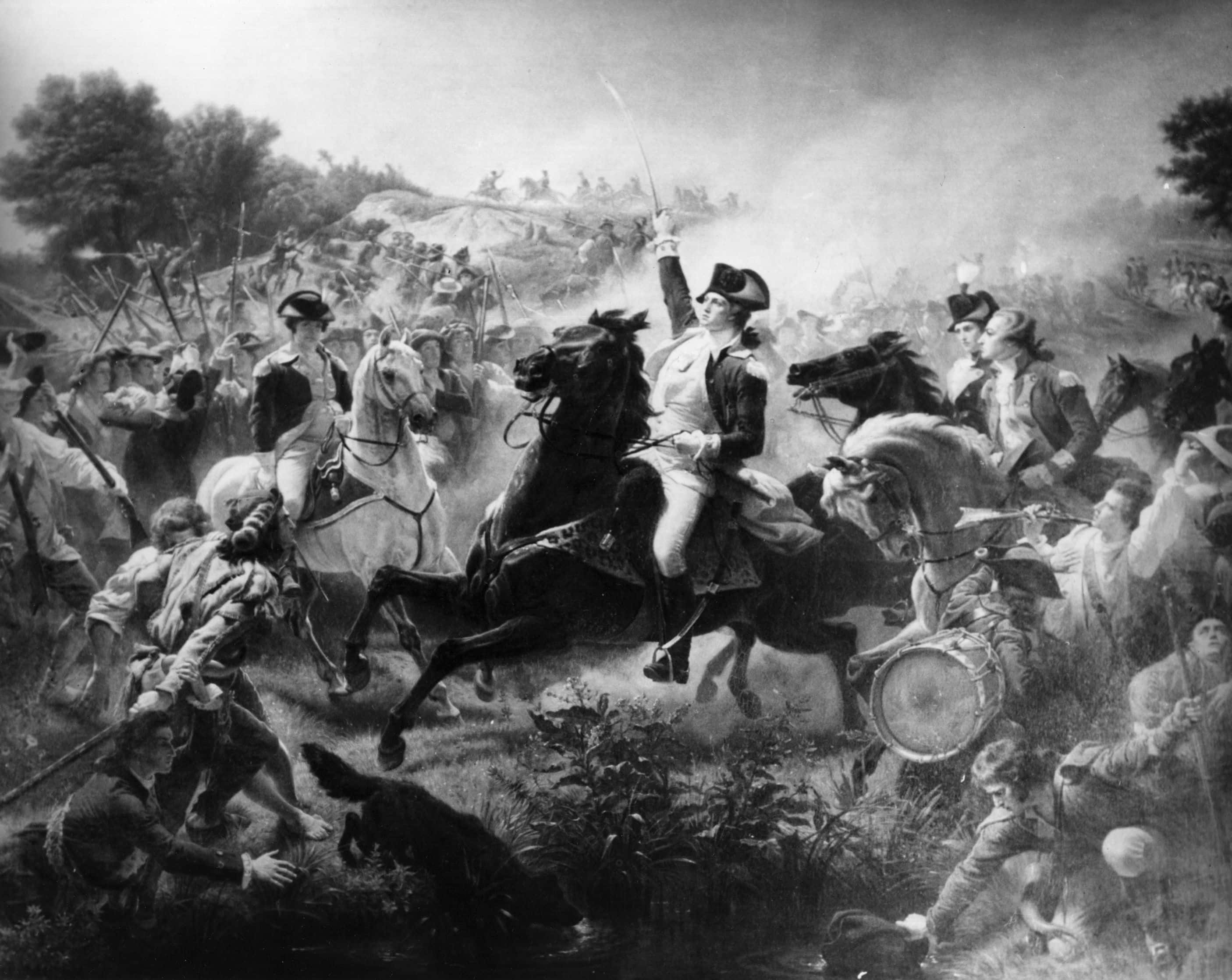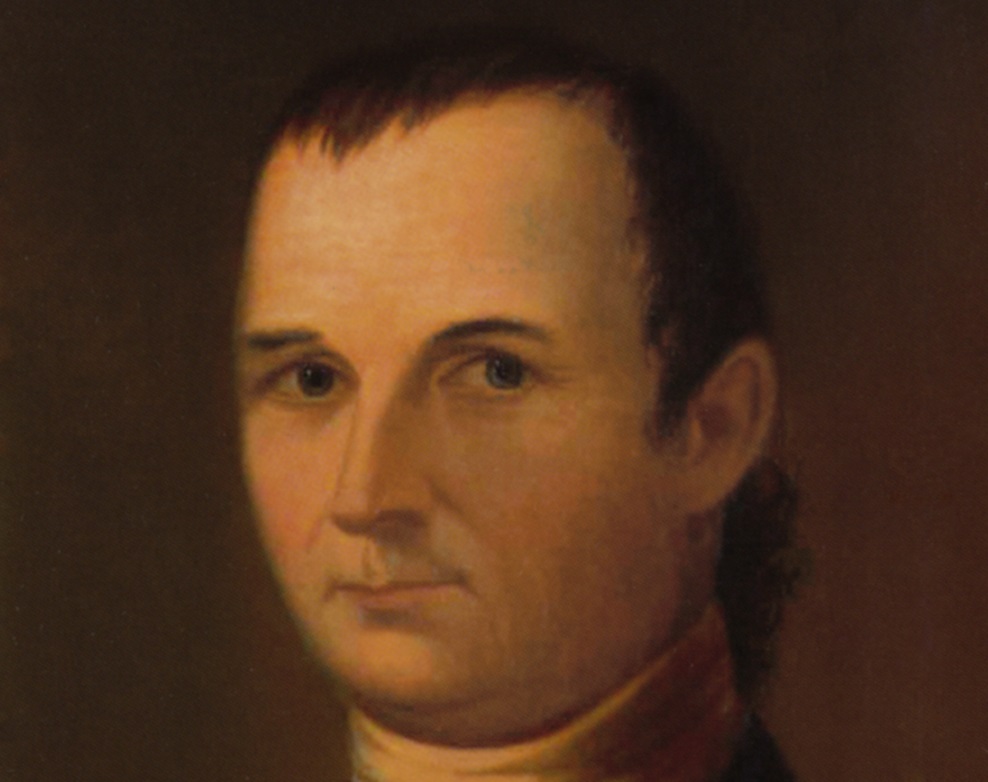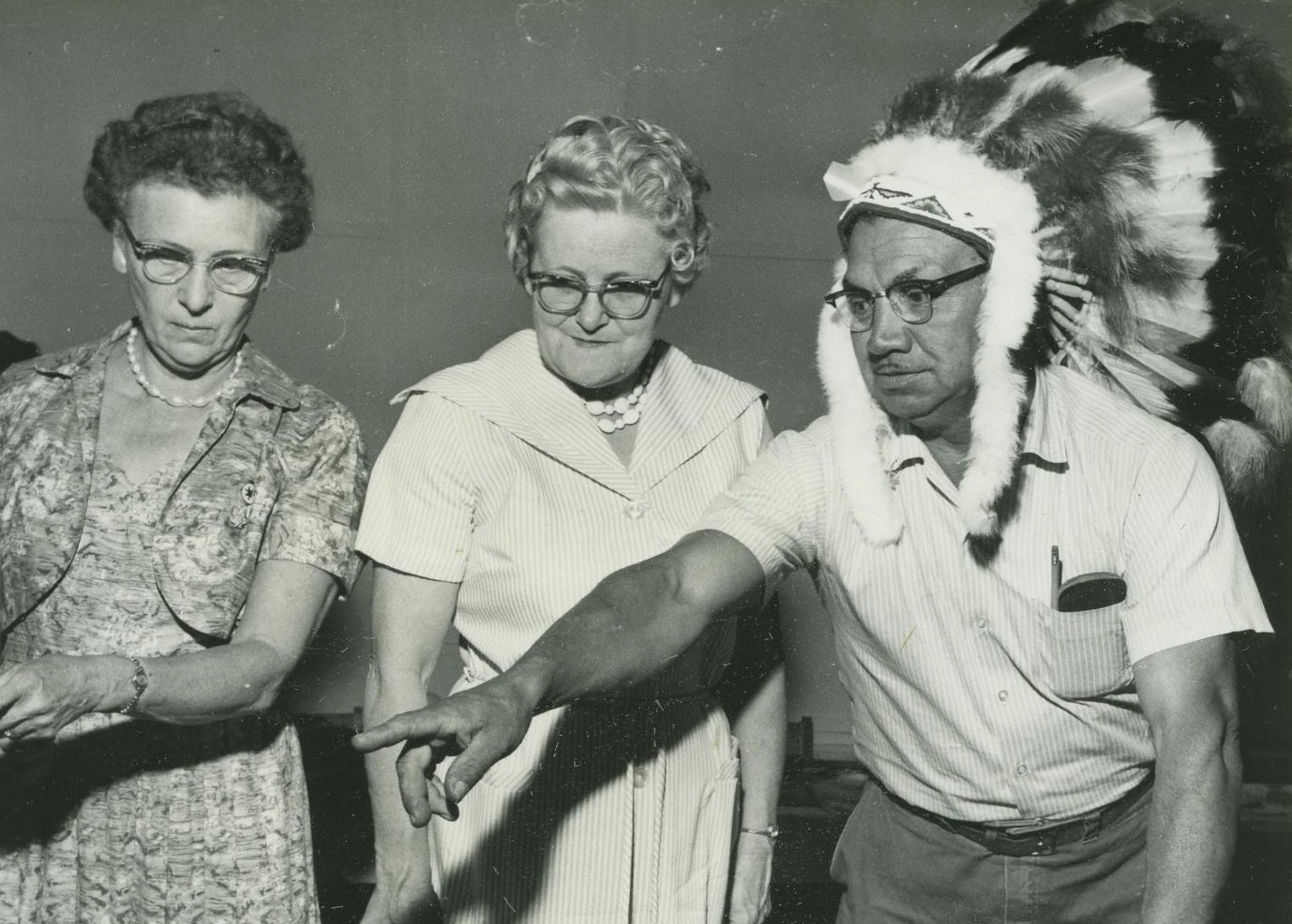America's First Ally
The Oneida Indian Nation made their mark on American history when they became the first ally to America as they joined the colonists in their fight for independence during the American Revolutionary War.
But their victory over the British wasn’t such a win after all—it was actually the beginning of a nightmare. Who are the Oneidas, and what happened to them?

The Oneida
The Oneida are a Native American tribe and First Nations band. They are one of the five founding nations (later six) of the Six Nations Iroquois Confederacy (also known as Haudenosaunee) in the area of upstate New York.
For centuries, they lived a self-sustaining lifestyle, living and thriving peacefully off the land.
Their Name
The name "Oneida" is derived from the English pronunciation of Onyota'a:ka, the people's name for themselves. It means, “People of the Standing Stone,” and it’s based on an intriguing ancient legend.
The Legend
According to the legend, the Oneida people were being pursued on foot by an enemy tribe. As their enemies chased the Oneidas into a clearing within the woodlands, they suddenly disappeared.
 National Gallery of Art- Washington DC, Picryl
National Gallery of Art- Washington DC, Picryl
People Of The Standing Stone
The Oneidas had instantly disappeared, leaving the enemy confused as to where they could have gone. It was then believed that they had shapeshifted into the stones that stood in the clearing.
As a result, they became known as the People of the Standing Stone. But that’s not the only legend about their name.
 Université Laval Library, Picryl
Université Laval Library, Picryl
Big Tree People
Older legends have the Oneida identifying as Latilutakówa, the "Big Tree People", or "People of big trees".
However, the only information we have today about this lies within the elders, who can only give some insight from oral history passed on. It is believed the association may correspond to Iroquoian concepts of the Tree of Peace.
The Tree Of Peace
The Haudenosaunee 'Tree of Peace' finds its roots in a man named Dekanawida, the peace-giver.
Dekanawida gave the Five Nations a symbol that would signify the newly accepted peace and unity of the five nations. This symbol was the great white pine tree, “the tree of the Great Long Leaves".
This tree of peace became the symbol of solitude among the chiefs—and offered them something incredible.
 John Mix Stanley, Wikimedia Commons
John Mix Stanley, Wikimedia Commons
The Tree Of Peace
The creation of the tree of peace figuratively gave the chiefs the ability never to die, "because their chiefly titles would be passed down to their successors forever. In this way, the League of Nations would always be kept alive".
While their name as a whole has a few different origins, individuals are also given carefully selected names.
 John Mix Stanley, Wikimedia Commons
John Mix Stanley, Wikimedia Commons
Their Names
Individuals born into the Oneida Nation are identified according to their spirit name (or what may be called an Indian name), their clan, and their family unit within a clan.
For example, Onangwatgo means “big medicine,” and was the spirit name of a chief.
Their Clans
The Oneida identify with three main clans: the Wolf, the Turtle, and the Bear. Each clan has a significant origin experience that underlines their responsibility.
The Wolf clan is said to be the pathfinders, giving the people direction in life. The Turtle clan’s responsibility is to look after the environment. And the Bear clan became known as the medicine people.
Clan Relationships
The Oneida have a matrilineal kinship system—meaning children are considered to be born into the mother’s clan, through which descent and inheritance passes.
Members of each clan are considered relatives. So, two members of the Bear clan would be considered brother and sister—and cannot marry. Even though they may not be blood related, they are clan related.
And because of the matrilineal kinship, women are highly regarded.
 Laslovarga, CC BY-SA 3.0, Wikimedia Commons
Laslovarga, CC BY-SA 3.0, Wikimedia Commons
The Clan Mothers
Clan mothers are responsible for choosing quality leaders and making decisions for the family, for the clan, and for the nation. A clan mother has a responsibility to everyone that is in the same family line.
They also settle arguments, ensure families are conducting their lives in the proper manner, and name all the newborns in the clan.
 Michael Barera, CC BY-SA 4.0, Wikimedia Commons
Michael Barera, CC BY-SA 4.0, Wikimedia Commons
The Chiefs
The chiefs are chosen by the clan mothers. They are chosen according to their ability to make choices for the people on the issues that have been discussed.
They’re responsible for making choices and decisions that are in the best interest of the families within the clan. Future generations are highly considered when making major decisions.
 Dennis G. Jarvis, CC BY-SA 2.0, Wikimedia Commons
Dennis G. Jarvis, CC BY-SA 2.0, Wikimedia Commons
The Faith Keepers
Faith keepers are responsible for ensuring ceremonies and rituals are being held when they should be—specifically when the seasons change.
They have similar duties as a clan mother as counselors, to help mend disagreements that come about within the families, including counseling married couples.
Everyone in the tribe has a responsibility—including those without an official title.
 The Graphic, Wikimedia Commons
The Graphic, Wikimedia Commons
The People
All of the tribespeople, young and old, including those who do not yet have a title, are considered to have “the greatest responsibility". They are said to be “the strength of the community,” and “the ones that make them who they are as a people".
As a result, even the average joes of the tribe are considered greatly important to the well-being of the clan.
 Unknown Author, Wikimedia Commons
Unknown Author, Wikimedia Commons
Their Villages
Traditionally, Oneida people lived in hand-built dwellings called longhouses. They were built from wood, bark, and animal hide.
Usually, one longhouse would be home to a number of families within the same clan. The average size was about 60 feet long, 18 feet wide, and 18 feet high—but even bigger ones existed. The largest longhouse ever discovered measured 334 feet long by 23 feet wide.
A large village might contain as many as 120 longhouses.
 Wilbur F. Gordy, Wikimedia Commons
Wilbur F. Gordy, Wikimedia Commons
Governing The Villages
Each clan governs itself as well as joining with the other clans to govern the villages and the tribe. During clan meetings, the clan chiefs share information and come together to make decisions.
And when an issue is presented, the process is long—but important.
 Richard J. Tucker, Wikimedia Commons
Richard J. Tucker, Wikimedia Commons
Resolving Issues
Tribal issues are handled during clan meetings. It is important that during these meetings, “everyone is of one mind".
When an issue comes about, the Wolf clan puts it to the floor, giving it to the Turtle clan, who then accepts the issue and “crosses it over the fire” to the Bear clan, who then deliberates and makes a recommendation.
This opens up a dialogue until a solution is found. This is a very old tradition of the Oneida, but it’s only one of many.
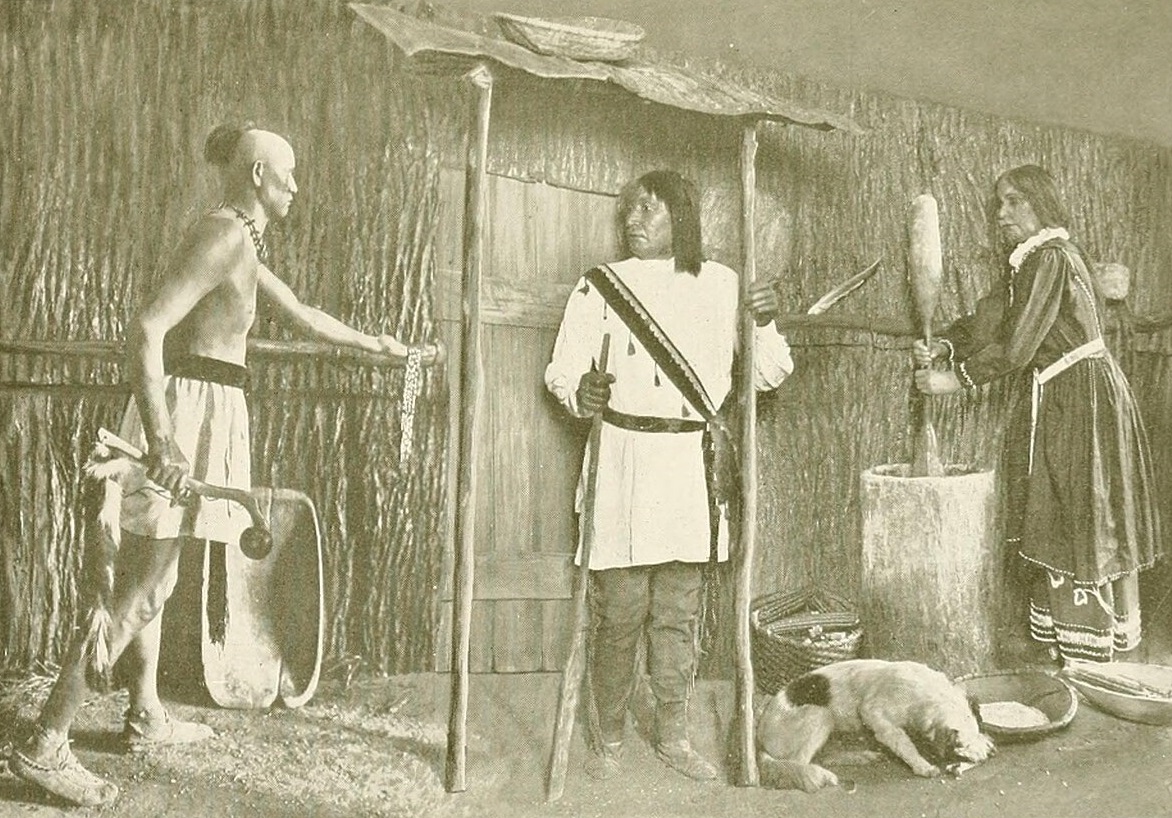 Internet Archive Book Images, Wikimedia Commons
Internet Archive Book Images, Wikimedia Commons
The Roles Of Oneida Women
But when it came to everyday responsibilities, the Oneida had typical gender roles that would help keep order. While women were very highly regarded in the tribe, they still actively participated in agriculture, caring for children, preparing meals, making clothing, and making baskets and pottery for income.
 Arthur C. Parker, Wikimedia Commons
Arthur C. Parker, Wikimedia Commons
The Roles Of Oneida Men
The Oneida men were traditionally responsible for hunting, fishing, and warfare. They also made tools and built structures—like their longhouses. They also conducted trade with other tribes, and negotiated conflicts.
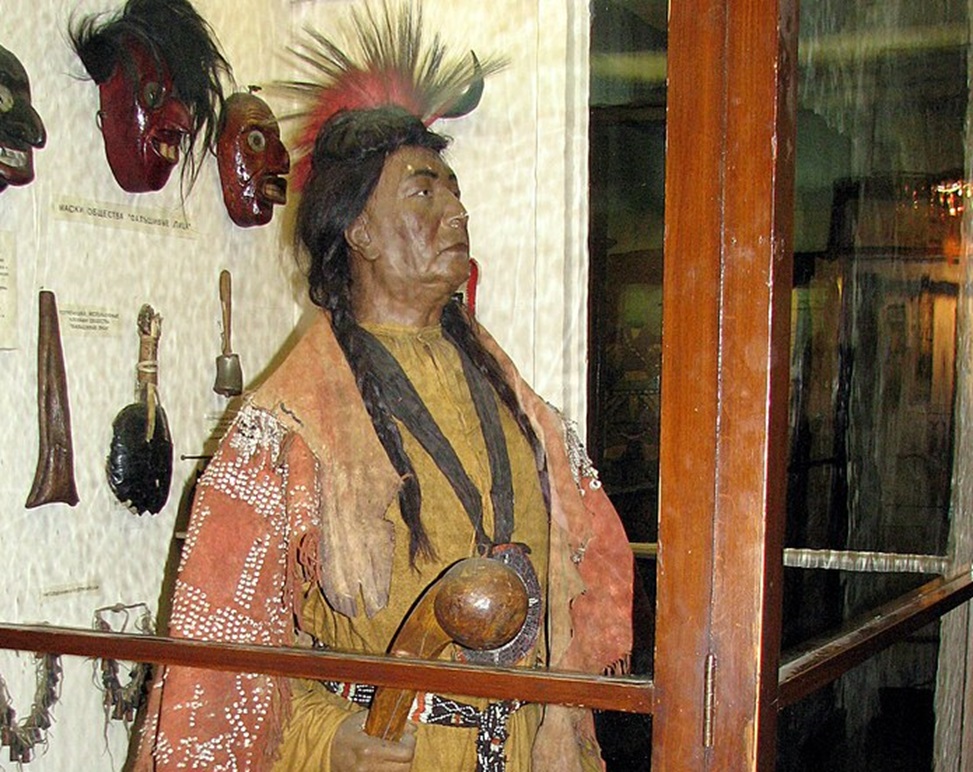 Корзун Андрей , CC BY-SA 3.0, Wikimedia Commons
Корзун Андрей , CC BY-SA 3.0, Wikimedia Commons
Oneida Children
Oneida children learned their roles and responsibilities from a young age by observing and helping their elders, and through play. The Oneida tribe treasures their children, and have always spent a great deal of time making things for them, such as toys, clothing, and comfort items.
 New York State Museum, Wikimedia Commons
New York State Museum, Wikimedia Commons
Their Entertainment
Traditionally, the Oneida had various games and toys that were created by elders and passed on through generations. One of those games is lacrosse—known to them as “the Creator’s game".
Aside from fun, lacrosse was also a religious celebration.
 George Catlin, Wikimedia Commons
George Catlin, Wikimedia Commons
The Religious Side Of Lacrosse
The religious side of lacrosse comes from the Oneida Creation Story, which describes a Spirit World that preceded our Earth and hangs above it. The residents of that sky land lack sickness and death. They know only happiness—possibly because they enjoy lacrosse.
But that’s not all.
 George Catlin, Wikimedia Commons
George Catlin, Wikimedia Commons
The Tradition Of Lacrosse
The tradition of the game dates back to an oral tradition that recounts young warriors staging a lacrosse game for a chief who had just lost his children. But it goes deeper than this.
 Morgan, Lewis Henry, Wikimedia Commons
Morgan, Lewis Henry, Wikimedia Commons
Lacrosse As A Cure
Lacrosse is “pleasing” to the Creator but it is also a rite sacred to the Thunders, the seven honored elders who move across the sky from west to east cleansing the Earth with winds and rains. In some communities, lacrosse is prescribed as a curing ritual.
While many Oneida games have deeper intentions—so do their toys.
 Library of Congress, Wikimedia Commons
Library of Congress, Wikimedia Commons
The Legend Of The No Face Doll
To this day, the Haudenosaunee people do not put faces on their corn husk dolls. The reason stems from a legend about the Corn Spirit who created a doll with a beautiful face. The doll went around from village to village, playing with children. Everyone told her how beautiful she was—and she eventually got very conceited.
The Great Spirit warned her to take it down a notch, but she didn’t listen—so he punished her by taking away her beautiful face.
The no face doll is a reminder to the people to never think they are better than anyone else.
 National Gallery of Art, Wikimedia Commons
National Gallery of Art, Wikimedia Commons
Their Traditional Clothing
Clothing carries great meaning in the Oneida culture, as it is a physical representation of who they are. Before coming into contact with the Europeans, the Oneida tribe would use only natural materials to make their clothing, such as animal hides and tree bark.
Some Oneida wore nothing but handmade moccasins on their feet. But when the Europeans arrived, new material became more available.
Trade Material
The Europeans arrived, and they brought the trade business with them. The Oneida began trading for newer materials, and their clothing started to include calico cotton and broadcloth.
However, even though the material changed, the basic design of the outfits has remained the same, even hundreds of years later.
 George Catlin, Wikimedia Commons
George Catlin, Wikimedia Commons
Traditional Headwear
One specific clothing accessory worn by the Oneida was headwear. The men would wear traditional Iroquois headdresses called kastoweh, which would consist of feathers and insignia representing their tribe.
The women would wear beaded tiaras, sewn in woodland designs as a representation of their nation.
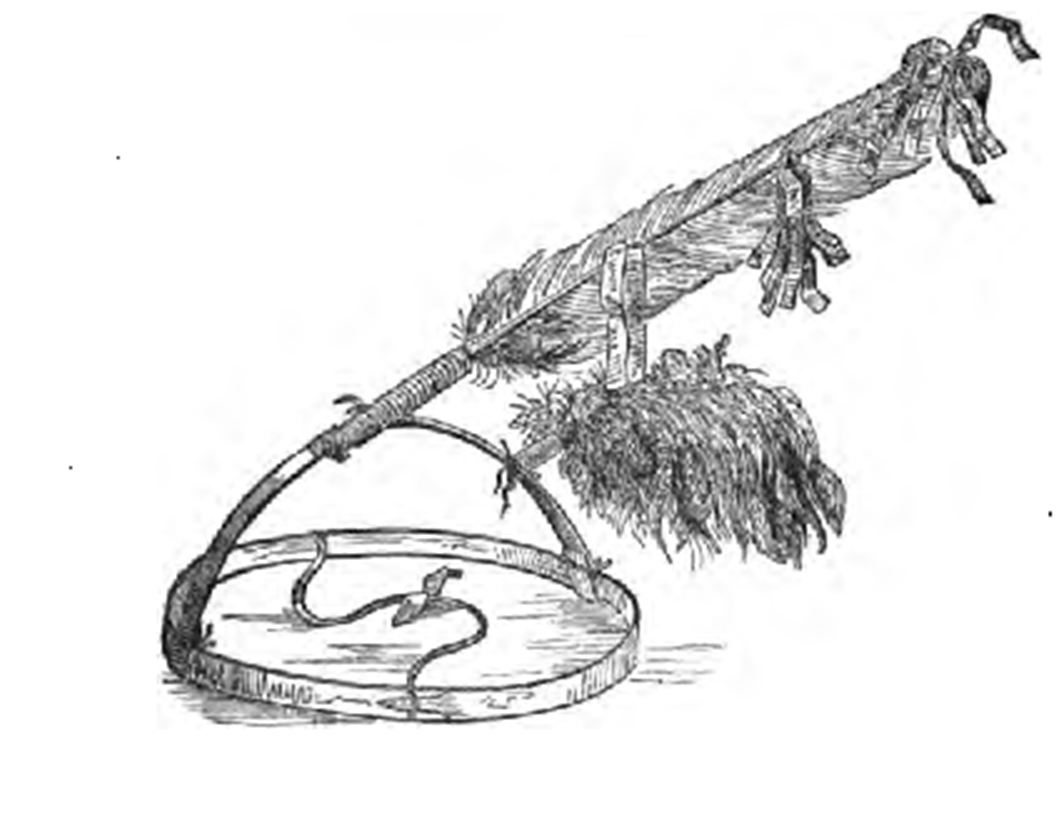 Lewis Henry Morgan, Wikimedia Commons
Lewis Henry Morgan, Wikimedia Commons
Beadwork And Artistry
The Oneida have always been very skilled in beadwork and artistry. Traditionally, they created items as souvenir items sold during the Victorian era, such as moccasins, purses, pincushions and hats.
But the history behind their beadwork is heartbreaking.
Beadwork As Survival Art
Beadwork was a survival art form that began when the Oneida were impoverished and struggling with devastating cultural loss. Each item was the product of long work, and was imbued with sacred values.
Oneida regard bead-working as a gift from the Creator to teach patience and humility. It was also used as a practice to uphold another cultural tradition.
 Internet Archive Book Images, Wikimedia Commons
Internet Archive Book Images, Wikimedia Commons
Storytelling
The Oneida believe that storytelling knits generations together. Oftentimes, beadwork was done by women of all generations, and they would use this time to provide an oral history to the younger ones.
Their oral tradition is evident in all areas of their lives, though, not just during beadwork.
 George Catlin, Wikimedia Commons
George Catlin, Wikimedia Commons
Traditional Dancing
The Oneida are also known for their traditional dancing. In the Oneida culture, there are two types of dancing: social and ceremonial. Social dancing is for the enjoyment of all people, and often includes a form of storytelling. The round dance, rabbit dance, old moccasin dance, and canoe or fishing dance are different types of social dances.
Ceremonial dancing is very different as it is extremely sacred.
 National Gallery of Art, CC0, via Wikimedia Commons
National Gallery of Art, CC0, via Wikimedia Commons
Ceremonial Dancing
Ceremonial dancing is sacred and is not to be performed in public. Sacred dances are meant to be performed privately in the longhouses. Examples of sacred dances include the Maple Syrup, Strawberry, Bean, Sun, and Moon dances.
Singing is also a part of ceremonial dances—but it's very different for social dances.
 National Gallery of Art, Wikimedia Commons
National Gallery of Art, Wikimedia Commons
Ceremonial And Social Singing
Singing can be performed during ceremonial dances—but when it comes to social dancing, only chanting is allowed.
During the ceremonial singing, there is an introduction for every song. And when the beat changes, the dancing begins. Cues are given from the drums, which indicate to the dancers when to switch partners.
And if a dancer was invited to dance but refused, etiquette required them to offer tobacco as a settlement.
The Celebration Of The Strawberry
In the Haudenosaunee culture, the strawberry is considered a gift from the Creator and the first berry of the season holds a special place for the Oneidas. The first batch is always celebrated with a special ceremony in mid-June.
They even named the month after the berry: Awʌ́hihte’ (a-WUH-heat).
 Jacques Grasset de Saint-Sauveur, Wikimedia Commons
Jacques Grasset de Saint-Sauveur, Wikimedia Commons
Their Food
Traditionally, the Oneida made use of the land by “eating the seasons". This meant that in the winter months when fresh food was lacking, they would eat dried fruits and vegetables that were harvested earlier in the year. They also ate a variety of nuts for added protein and fat, as well as wild rice that grew in swamp lands.
They preserved meats, such as deer, geese, duck and raccoon, in a brine or salt solution, and then hung them to dry.
 Laslovarga, CC BY-SA 3.0, Wikimedia Commons
Laslovarga, CC BY-SA 3.0, Wikimedia Commons
Their Summer Diet
When the seasons changed, so did their diet. In the warmer months, the Oneida would boil down and eat wild onions, leeks, milkweeds, dandelions, and various fruits and berries. Fishing would begin in the spring and would be a common staple in many meals.
Maple trees were also abundant on their lands, providing them with sap that they would make into maple syrup to be used to flavor foods.
But as with many Indigenous tribes, their lands got smaller and smaller, eventually making food scarce.
 George Catlin, Wikimedia Commons
George Catlin, Wikimedia Commons
Their Lands
Back in the early 17th century, the Oneida occupied and maintained roughly 6 million acres of land in what is modern day central New York State.
But after the Europeans arrived, their boundaries drastically changed.
Before European Contact
The Oneida Indian Nation existed as a sovereign government with recognized borders long before the English colonies or the United States were formed.
In 1613, the Oneida and other members of the Haudenosaunee Confederacy reached an agreement on a treaty with the newcomers (the Europeans)—and it was recorded with a two-row wampum belt.
 James Newbury Edy, Wikimedia Commons
James Newbury Edy, Wikimedia Commons
The First Agreement
The belt depicts two paths, one for the Oneida and their Haudenosaunee brothers, and the other for the Europeans.
This was the first formal recognition by non-Indians that the people who already occupied North America were independent nations that possessed territorial rights when the Europeans began to share their land.
Everyone had what they wanted, and they lived peacefully—for now.
 Internet Archive Book Images, Wikimedia Commons
Internet Archive Book Images, Wikimedia Commons
The 1763 Proclamation
The Oneida managed to thrive on their lands for over a century before the government got involved again.
In 1763, the British Crown created a policy that gave the king power to engage in land transactions with Indian nations—which basically recognized the Oneida territory as a self-governing nation, and the Crown’s desire for formal government-to-government relations.
Luckily, everyone was in agreement, and there was no threat to the Six Nations lands…yet.
 National Gallery of Art, Wikimedia Commons
National Gallery of Art, Wikimedia Commons
The American Revolution
In 1775, the American Revolution (also called the US War of Independence) started—and America had to fight to gain independence from the British Empire. During this war, 13 of Great Britain’s North American colonies threw off British rule to create their own country, the United States of America—and the Oneida became heavily involved.
The Oneida Nation’s Neutrality
The Oneida, as well as the five other tribes of the Six Nations Iroquois Confederacy, originally took a neutral stance in the American Revolution. This was because a neutral position gave the Confederacy leverage against both sides, as they could easily threaten to join one side or the other.
But this plan quickly crumbled.
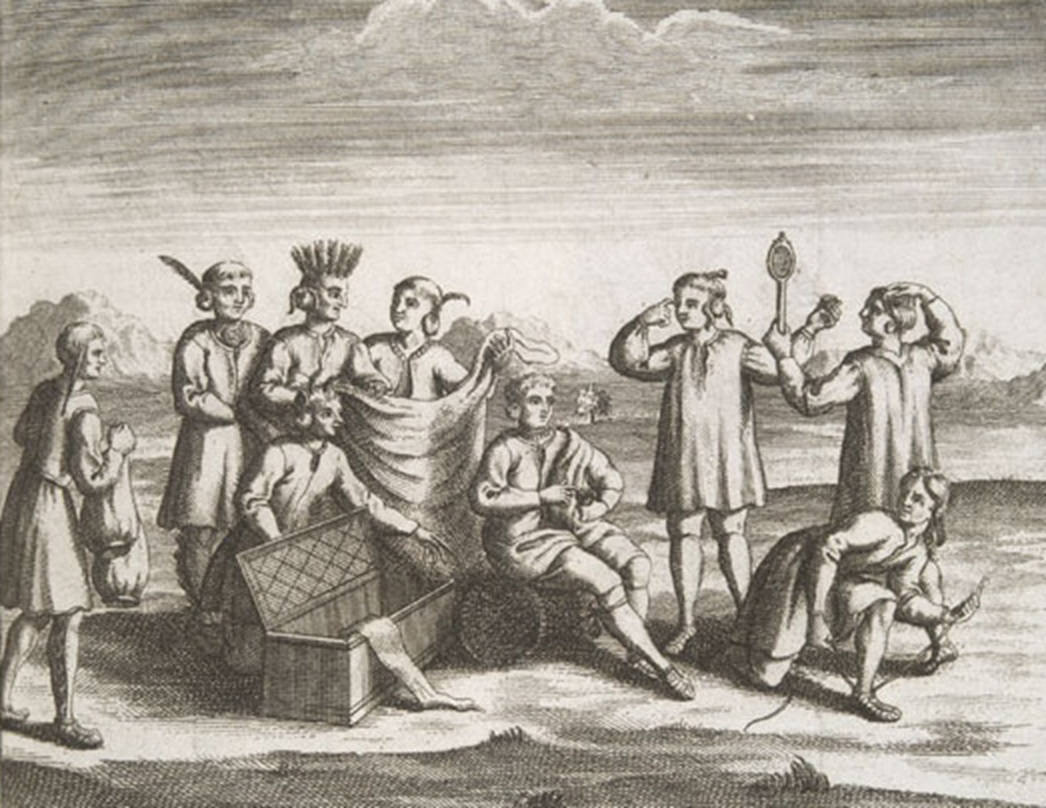 Bacqueville de La Potherie, Wikimedia Commons
Bacqueville de La Potherie, Wikimedia Commons
Losing Support
Eventually, the majority of the Six Nations Confederacy chose a side: the Loyalists (British)—which basically split the Oneida from the Confederacy.
For some time, the Oneida and the Tuscarora were the only ones left maintaining a neutral position. And they continued to advocate for it, and even tried to convince the other tribes to join them.
But ultimately, they were faced with an impossible decision.
 George Catlin, Wikimedia Commons
George Catlin, Wikimedia Commons
Favoring The Revolutionaries
The Oneida realized it was time to choose a side. Because of their proximity and relations with the rebel communities, most Oneida favored the revolutionaries.
It also helped that they were heavily influenced by a close colonist friend.
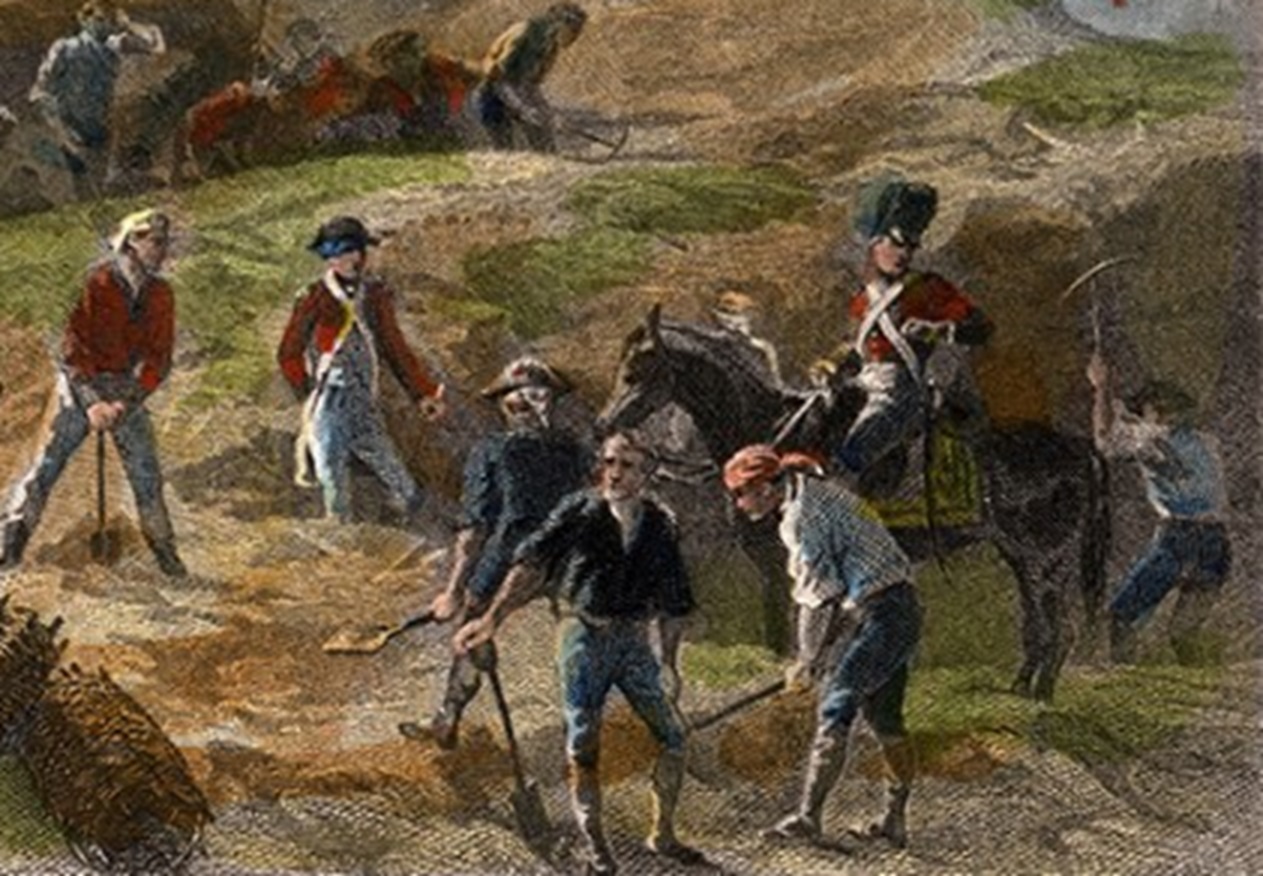 Alonzo Chappel, Wikimedia Commons
Alonzo Chappel, Wikimedia Commons
Samuel Kirkland
Samuel Kirkland, an American-born Presbyterian missionary, worked among the Oneida tribe for many years before the American Revolution. A number of the Oneida were baptized as Christians in the decade prior to the war, and he also worked with them to gain access to education and help for substance issues.
The Oneida had a strong relationship with Kirkland, and they trusted him.
They Joined The Rebels
The Oneida officially joined the rebel side, fighting for independence from British rule, and they contributed in many ways to the war. Their warriors were often used as scouts on offensive campaigns and to assess enemy operations.
They also provided an open line of communication between the rebels and their Iroquois rivals, as they understood the languages and culture.
 Johannes Oertel, Wikimedia Commons
Johannes Oertel, Wikimedia Commons
Iroquois Support
Due to old alliances and a belief that they stood a better chance of keeping their lands under British rule, the majority of the Iroquois nations supported the British in some form or another.
Once again, only the Oneida and Tuscarora gave major support to the colonists—and this undoubtedly caused tension among the Indigenous groups.
 National Gallery of Art, Wikimedia Commons
National Gallery of Art, Wikimedia Commons
Turning On Each Other
The Confederacy members who supported the British helped their allies launch numerous devastating raids—including attacks on the Oneida. The rival tribes often raided and destroyed each other’s villages.
Nations were fighting nations, and individuals within each nation took different sides. It was an absolute mess, and a disheartening one.
 George Catlin, Wikimedia Commons
George Catlin, Wikimedia Commons
The Battle Of Oriskany
In 1777, between 60-100 Oneida warriors fought alongside the colonial militia in the Battle of Oriskany. It was one of the few battles of the war in which most non-Indigenous participants were settlers born in the Thirteen Colonies.
The colonists suffered heavy casualties during the battle—and so did the Oneida.
 John R. Chapin, Wikimedia Commons
John R. Chapin, Wikimedia Commons
A Place Of Great Sadness
This battle is significant because it essentially marked the beginning of a civil war among the Iroquois nations—solidifying their opposing stances in the American Revolution.
The battle's location is known in Iroquois oral histories as "A Place of Great Sadness", and has since been designated as a National Historic Landmark.
It’s also the battle that put one particular Oneida woman in the history books.
 Stashlab, CC BY-SA 4.0, Wikimedia Commons
Stashlab, CC BY-SA 4.0, Wikimedia Commons
Tyonajanegen
Tyonajanegen, also known as “Two Kettles Together,” was an Oneida woman who fought in the Battle of Oriskany alongside her husband and son.
Her husband, who took the lives of nine enemy warriors, was shot in the wrist and unable to use his pistol. While he continued to fight using his tomahawk, Tyonajanegen armed herself with his pistol, as well as hers, and took out many enemy warriors while riding through the battlefield on horseback. She fought alongside her husband and son for six grueling hours—and all three survived.
But that’s not all she did.
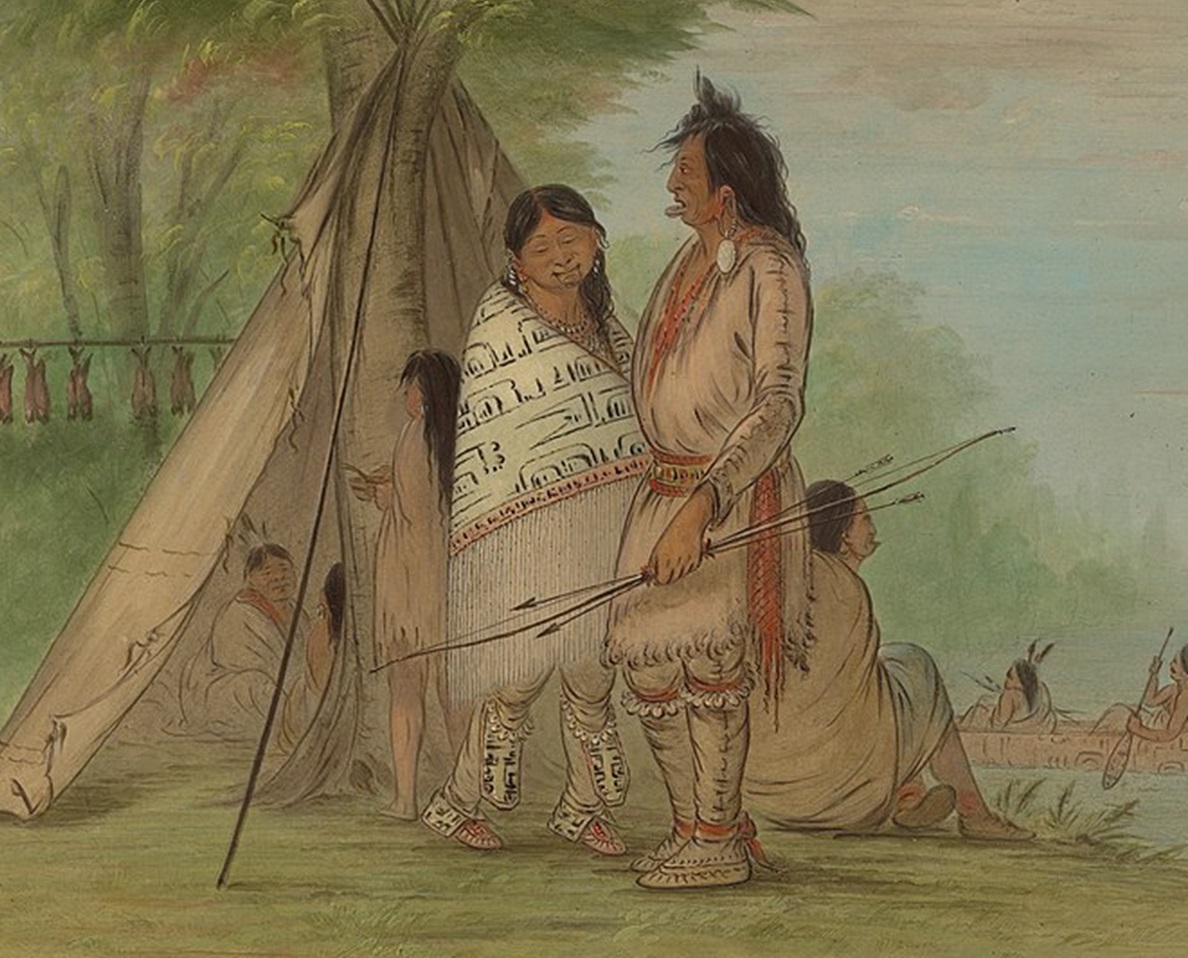 National Gallery of Art, Wikimedia Commons
National Gallery of Art, Wikimedia Commons
Tyonajanegen
After the horrific battle, Tyonajanegen rode on horseback to bring news of the outcome to local rebels and Indians. During much of the American Revolution, she actively assisted in transporting messages for the rebels.
As a reward for her services, General Haratio Gates ordered a delivery of “three gallons of rum, for a winter’s supply for her family". She became a well-known hero.
She wasn’t the only important support, either.
 George Catlin, Wikimedia Commons
George Catlin, Wikimedia Commons
Polly Cooper
Throughout the Revolution, the Oneida brought bushels of maize to General George Washington's starving Patriot army. During this time, many Oneidas formed friendships with prominent rebel leaders, including George Washington himself.
One Oneida woman, Polly Cooper, showed Washington’s people how to properly store, cook and eat the corn. Washington tried to give her cash as compensation, but she refused, stating that it was her “duty to serve".
But it wasn’t all sunshine and rainbows. Things eventually started to fall apart.
Losing Their Tribe
While the Oneida had once been a strong support for the colonists, their nation was slowly falling apart. Even though the chiefs had chosen to side with the colonists, individuals within the tribe had started to make their own decisions.
And it didn’t look good.
 National Gallery of Art, Wikimedia Commons
National Gallery of Art, Wikimedia Commons
Oneida Defectors
As the war progressed and the Oneidas’ position became more dire, a minority group of Oneida people became skeptical of the side they were on. The minority started to grow, and when an important Oneida settlement known as Kanonwalohale was destroyed, a large group of Oneidas defected from the rebellion, and joined the British.
The Oneida tribe was smaller than ever, but they still didn’t give up.
 National Gallery of Art, Wikimedia Commons
National Gallery of Art, Wikimedia Commons
American Independence
In July of 1776, the Revolutionary War officially ended the British rule over the colonies, establishing their independence as the United States of America.
The Declaration of Independence embodied the political philosophies of liberalism and republicanism, rejected monarchy and aristocracy, and famously proclaimed that "all men are created equal"—but the war wasn’t over just yet.
 John Trumbull, Wikimedia Commons
John Trumbull, Wikimedia Commons
Acquiring More Land
While the colonists had gained control over the 13 colonies on American soil, there was still much more land to dispute. The fighting continued for five more years, with France and Spain joining as allies of the United States.
Eventually, in 1783, the British agreed to give the United States nearly all the territory east of the Mississippi River and south of the Great Lakes.
Loyalists fled to other British territories, including Canada. But where did the Oneida end up?
 Laslovarga, CC BY-SA 3.0, Wikimedia Commons
Laslovarga, CC BY-SA 3.0, Wikimedia Commons
Retaliation On The Oneida
After the war, the Oneida were displaced. Their villages were continuously raided by lingering British settlers looking for retaliation—and who couldn’t tell the difference between Iroquois allies or foes.
Many of the Six Nations were forced from their land, homeless and hungry. And then it got worse.
 New York Public Library, Picryl
New York Public Library, Picryl
Unclear Boundaries
Following the war, the Oneida had hoped to return to their homelands and rebuild their villages, and their lives. However, the colonists (now “Americans”), believed that they had actually won the land in the conflict, and it no longer belonged to the people of the Six Nations.
So now, a whole lot of Indigenous people went from simply being house-less to land-less. They literally had nowhere to go—and this didn’t sit well.
 Laslovarga, CC BY-SA 3.0, Wikimedia Commons
Laslovarga, CC BY-SA 3.0, Wikimedia Commons
British Supporters
Not only that, there were still people in the US who sided with the British—including many Indigenous peoples. They believed that if the British had won the war, they’d all have their land back, and this wouldn’t be a problem.
Instead, they were now kicked off their land and left to fend for themselves. This drastically changed the way the Oneida felt about their American allies.
![]() Scan by NYPL, Wikimedia Commons
Scan by NYPL, Wikimedia Commons
A New Enemy
Now the US had a new enemy, and was also losing one of their strongest allies—the Oneida. In an attempt to make peace, a series of treaties were formed—but they didn’t do what they had hoped.
 Osama Shukir Muhammed Amin, CC BY-SA 4.0, Wikimedia Commons
Osama Shukir Muhammed Amin, CC BY-SA 4.0, Wikimedia Commons
The Fort Stanwix Treaty
The US government created several peace treaties, in an attempt to make up for the trouble the war caused.
But these “peace” treaties also involved the Six Nations giving up more land in Ohio—and they didn’t like that.
 National Park Service, Wikimedia Commons
National Park Service, Wikimedia Commons
Refusing The Treaties
The Six Nations refused to agree to any of the so-called “peace treaties” presented by the US government, which only increased tensions between them. The US government was simply not being fair, and the Six Nations held strong.
But their perseverance paid off…sort of.
Giving Them What They Want…And Deserve
After a series of back-and-fourths between the US government and the Six Nations, the government was afraid the Oneida were going to join the oppositional forces who were still lingering around the western frontier.
They now realized that the Indigenous nations weren’t about to give up in their fight for the land they so very much deserved, and if they didn’t give them what they wanted, they were risking even bigger problems.
 Unknown Author, Wikimedia Commons
Unknown Author, Wikimedia Commons
The Conference
This is when the US government formed a new, more fair treaty: The Treaty of Canandaigua. Discussions were tense at first, but it was the Indigenous chiefs who were able to maintain professionalism, reminding government officials that peace was the ultimate goal.
 Ben Nolan, CC BY 2.0, Wikimedia Commons
Ben Nolan, CC BY 2.0, Wikimedia Commons
Terms Of The Treaty
After much discussion, 59 chiefs signed the treaty that established peace and friendship between the United States of America and the Six Nations. It granted them 6 million acres of land, primarily in New York—effectively becoming the first Indian reservation in the United States.
It also affirmed land rights, defined boundaries, and promised monetary compensation. But while all of this sounds great—you can bet your bottom it didn’t last.
 George Catlin, Wikimedia Commons
George Catlin, Wikimedia Commons
Current Status
While the US government managed to honor the monetary pay-outs, something they did not honor was the land rights—not surprisingly.
The treaty had promised to protect tribal land rights against state interference. But by the early 19th century, the state of New York was purchasing treaty lands and forcing the removal of the Oneida—displacing them once more.
 Kenneth C. Zirkel, CC BY-SA 4.0,Wikimedia Commons
Kenneth C. Zirkel, CC BY-SA 4.0,Wikimedia Commons
A Massive Loss
Technically, the Oneida had to share land at the Onondaga Reservation and did not have land to call their own. In the 1820s and 1830s, many of the Oneida remaining in New York relocated to Wisconsin, where they were “allowed” to buy land.
But as settlers continued to encroach their lands, more and more Oneidas fled North to Canada.
 Unknown Author, Wikimedia Commons
Unknown Author, Wikimedia Commons
A Devastating Blow
While the Oneida had actually helped the US government fight off the British and effectively take over the land, the government didn’t return any favors. They basically took the land as a win, and found small ways to slowly draw out the Six Nations populations over the next several years.
Eventually, they had almost nothing left.
 National Gallery of Art, Wikimedia Commons
National Gallery of Art, Wikimedia Commons
Millions Of Acres, Stolen
By 1920, the Oneida Nation only had 32 acres left—down from the 6 million they held before the American Revolution.
And while several chiefs had fought tirelessly over the decades, one Oneida woman by the name of Mary Winder felt empowered to continue the fight—and she actually got somewhere with it.
 Laslovarga, CC BY-SA 3.0, Wikimedia Commons
Laslovarga, CC BY-SA 3.0, Wikimedia Commons
Not Giving Up
Oneida Member Mary Winder wrote the Federal Indian Bureau in 1920, asking how much money was owed to the Nation for the loss of its homeland. Of course, she got no response. But she continued to write them for decades, requesting that they live up to treaty guarantees to preserve the Oneidas’ homeland.
And 26 years after her first letter, her efforts were finally noticed.
Weak Promises
In 1946, the commission was allowed to award monetary damages in cases where the US government didn’t live up to its responsibilities…but it couldn’t actually restore any land to them.
Money wasn’t what they wanted, though. They wanted their land back.
 MTBradley, CC BY-SA 3.0, Wikimedia Commons
MTBradley, CC BY-SA 3.0, Wikimedia Commons
Just Enough Acknowledgement
As the years went on, the issue continued to be pressed. And slowly, Indigenous voices were beginning to be heard. But it was never enough. The government acknowledged them just enough to be able to say they were doing something.
And then a horrific tragedy occurred, forcing immediate action.
 National Gallery of Art, Wikimedia Commons
National Gallery of Art, Wikimedia Commons
A Devastating Fire
In 1976, a fire broke out in a trailer home owned by family members of Mary Winder. However, the local fire department refused to respond to their calls for help, because of the territory boundaries.
As a result, two people perished in the fire. This event then became the catalyst for the Oneida Nation to stand up tall and once again become self-sufficient and re-build their community.
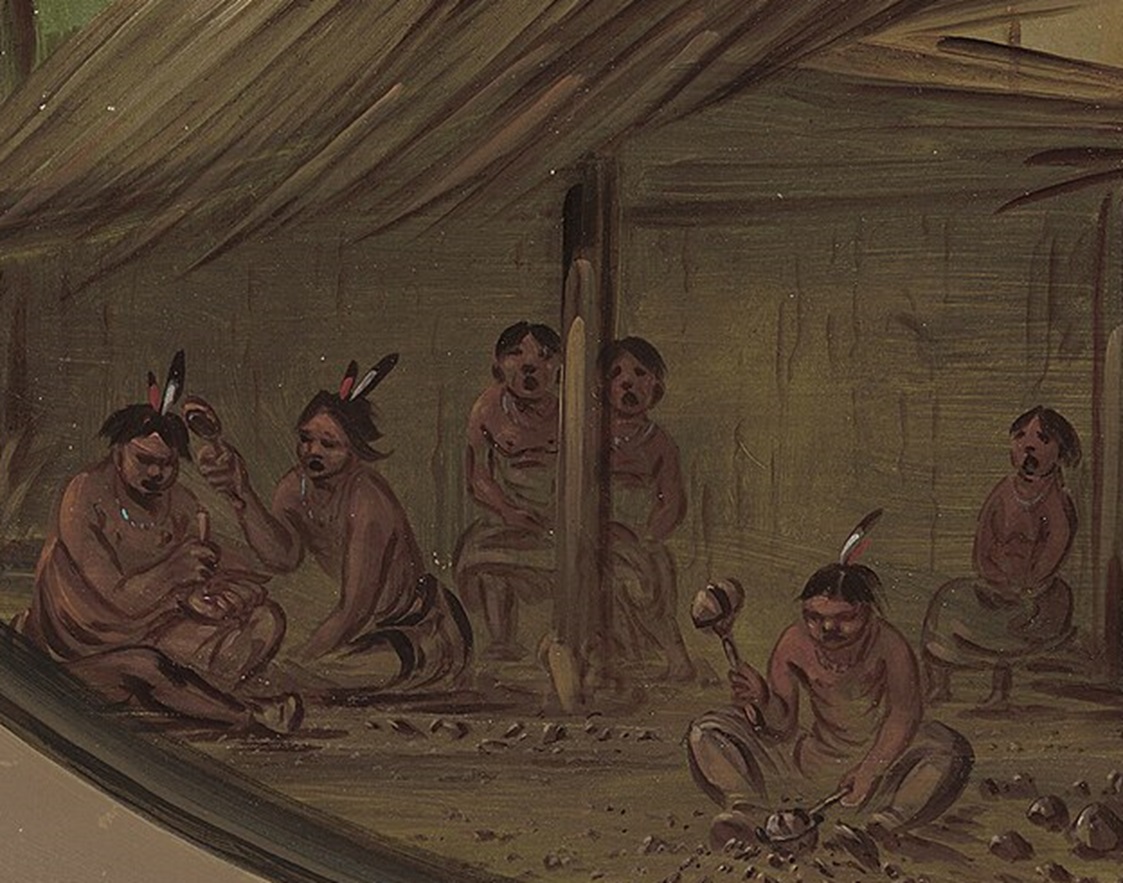 National Gallery of Art, Wikimedia Commons
National Gallery of Art, Wikimedia Commons
A Small Victory
After several more years of back-and-forth court proceedings, in 1987, the Oneida Nation was finally awarded 42 acres of land back. And while it was still a far cry from 6 million, it was a huge victory for the Oneida people.
Even still, the lawsuit continued.
 Frederika Eilers, CC BY-SA 3.0, Wikimedia Commons
Frederika Eilers, CC BY-SA 3.0, Wikimedia Commons
Approved And Denied
Over the next several decades, various portions of land were awarded back to the Oneida Nation in the state of New York. But at the same time, many of their requests were denied.
And while other smaller reservations have been created in Wisconsin and Canada, they still have not returned to their original 6-million-acre land.
But they never stopped fighting—or giving.
Their Homelands Today
Today, the Oneida have four federally recognized nations: the Oneida Indian Nation in New York, the Oneida Nation in and around Green Bay, Wisconsin, in the United States; and two in Ontario, Canada: Oneida at Six Nations of the Grand River, and Oneida Nation of the Thames in Southwold.
And it gets even better.
Generous Donations
Believe it or not, after years of injustice, the Oneida have remained true to their generous nature, and have used their monetary compensations to give back.
Not only do they take good care of their members in terms of quality education, inclusive health care, and meaningful employment, the Oneida Indian Nation Foundation has donated more than $20 million in the last two decades to charities, schools, and governments, including a $3 million endowment to the School of Law at Harvard University.
The Oneida Nation Today
Today, the Oneida Indian Nation has regained more than 18,000 acres of their original homelands—the most they have had recognized sovereignty over since 1824.
It’s been a slow and steady climb, but their perseverance has led to a resurgence for the Oneida Indian Nation that now prospers.
 RalphKohler, CC BY-SA 3.0, Wikimedia Commons
RalphKohler, CC BY-SA 3.0, Wikimedia Commons
A Victorious Future
The Oneida Nation today provides numerous programs and services to its more than 1,000 members—who have made it back to some of their New York homelands.
And through incredibly diversified business enterprises successfully built in recent decades, the Oneida Indian Nation has become one of the largest employers in New York.
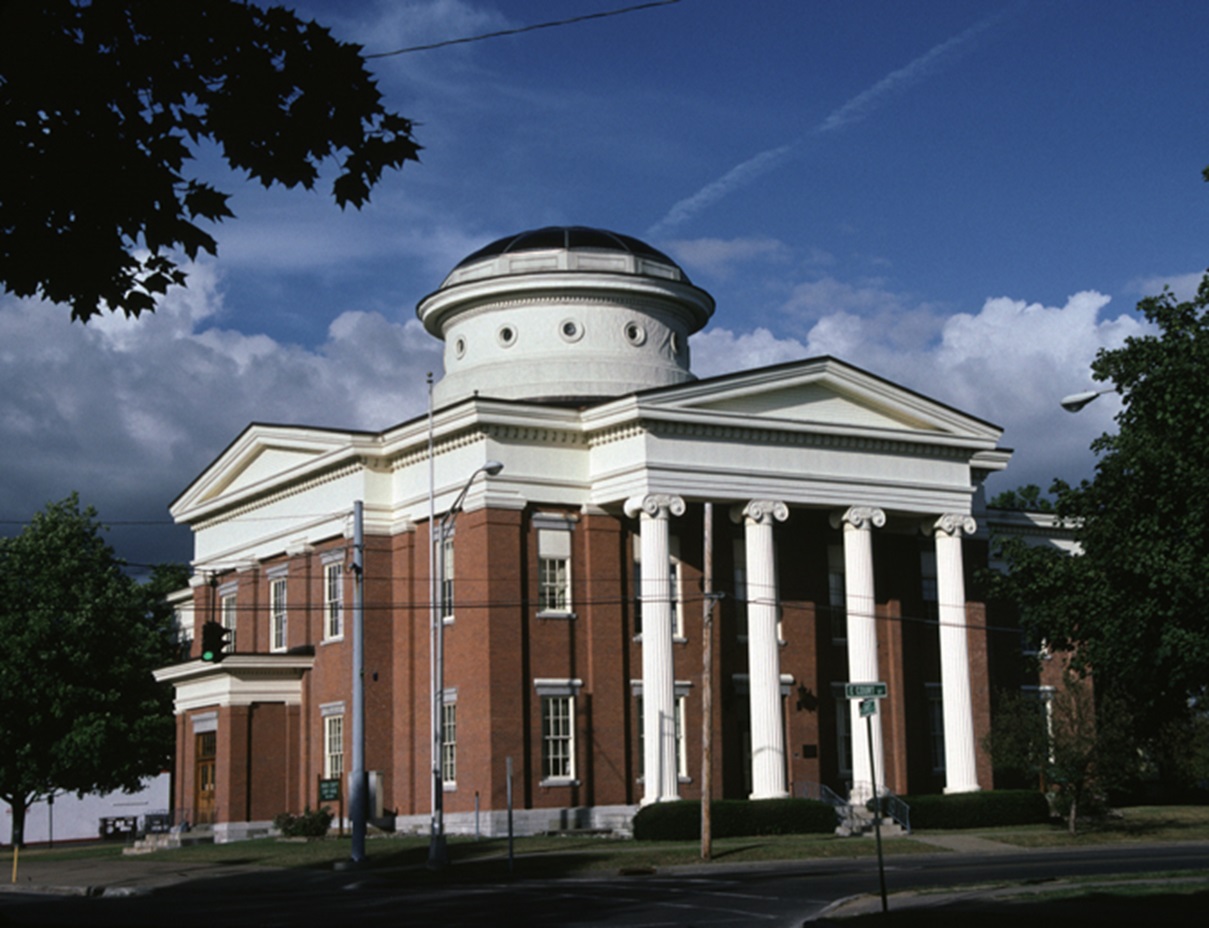 Calvin Beale, Wikimedia Commons
Calvin Beale, Wikimedia Commons
Final Thoughts
The Oneida people once lived a simple and peaceful life on a vast area of land that provided all they would ever need—until the Europeans showed up and destroyed their utopia.
After becoming a key ally of the United States, they fought tirelessly, bringing America to victory—only for them to take an immense personal loss in the end.
However, their perseverance is truly unmatched, and not only did they make it out on top, they managed to remain generous, peaceful, and forgiving the entire time.











